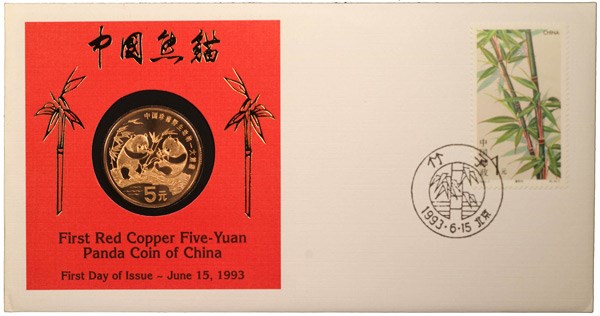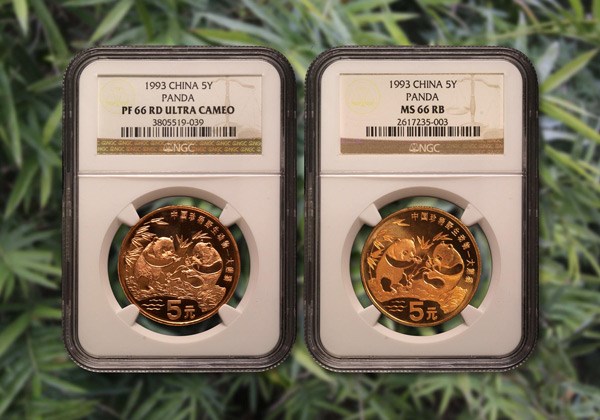Chinese Coins: Good Circulation
Posted on 7/18/2018
By
Peter Anthony
My cell phone rang as I waited to board a flight to Beijing from San Francisco International Airport. “Hey Peter, can you check out what dealers are selling at the show?” It was a coin dealer friend.
“Sure,” I replied, “Anything in particular?”
“I have a lot of cash coins here, but just tell me how it goes over there.”
Cash coins? Briefly, cash coins are the older coinage of China that was cast in molds, instead of struck with hammers like western coins of the period. They are easily recognizable by a hole in the center. Immense quantities of cash coins were issued over the centuries.
There was pretty much every kind of Chinese numismatic material imaginable for sale at the China International Coin Expo in Beijing. As I strolled from showcase to showcase, I mentally grouped the coins into four very broad categories: cast coins and ingots (or sycees), machine-struck coins that predate the People’s Republic of China, China Gold Coin Inc. (CGCI) issued “commemorative” coins (this includes the Panda series) and modern commercial “circulating coins”. “Circulating” means base metal coins that may change hands in everyday commerce.
I once sat at a dinner table with half a dozen Chinese modern circulating coin collectors and asked why they collect circulating coins. Several replied that they find circulating coins to be more closely connected to China’s history than the modern gold and silver issues. Two of them had given up collecting CGCI products in favor of circulating coins. That pair, however, seemed open to returning to gold and silver if the timing is right (translation: when precious metals are in an uptrend). For collectors the search for historical roots and authenticity adds to the luster of modern circulating coins.
Actually, except for recent precious metal issues, essentially all of China’s coins were originally meant to “circulate.” Even new coins benefit by association with this tradition. I have watched long lines of people form outside banks to get new circulating commemoratives at face value. Prices of some have increased dramatically. For instance, a three-coin set of 1979 circulating coins was shipped in a little blue folio. This set was once of so little consequence that it was given away by Panda America to customers who bought more valuable coins. Today that set is worth north of $1,000. Other circulating coin sets have gone up by even more, so it is well worth taking the time to be familiar with these.
For Panda lovers curious about circulating coins, one coin stands out: the 5 Yuan copper Panda released in 1993. According to the Standard Catalog of Modern Chinese Circulating Coins by Mr. Sun Keqin, the final mintage was 6 million coins. There were two million BU coins and 4 million proofs of widely varying quality. While the BU coins are not too hard to find, the proof versions seem scarcer despite the larger mintage.
 |
| The 1993 copper Panda was initially distributed by a stamp company. A First Day of Issue envelope marks the occasion. |
The 1993 5 Yuan copper Panda became the first in a series of copper circulating Chinese wildlife coins. The story behind this Shenyang Mint-struck Panda is little known. It began with an order for 10 million copper Panda coins by a foreign stamp company that tried to dip its toe into the coin market. That didn’t work out too well, so eventually, the mint distributed most of the coins through other channels. It is the only circulating coin with a Panda subject and it is the only Panda coin in copper.
 |
| China 1993 Panda 5 Yuan The design was struck in both proof and BU versions. |
The 1993 5 Yuan copper Panda was distributed in several kinds of packages, but the quality of the coins is generally quite low. From the 3,426 Mint state coins graded by NGC, only 4 are MS 69 and none are MS 70. The most common grade is MS66. Among 239 Proof coins NGC has graded only 7 are PF 68 and none are PF 69 or 70. Cherry picking a coin that will grade well from the multitude of lower quality examples is challenging, but it can be worth the effort. Every Panda collection deserves at least one.
So get out, circulate and see what all the excitement is about – with Chinese circulating coins.
Peter Anthony is an expert on Chinese modern coins with a particular focus on Panda coins. He is an analyst for the NGC Chinese Modern Coin Price Guide as well as a consultant on Chinese modern coins.
Stay Informed
Want news like this delivered to your inbox once a month? Subscribe to the free NGC eNewsletter today!
